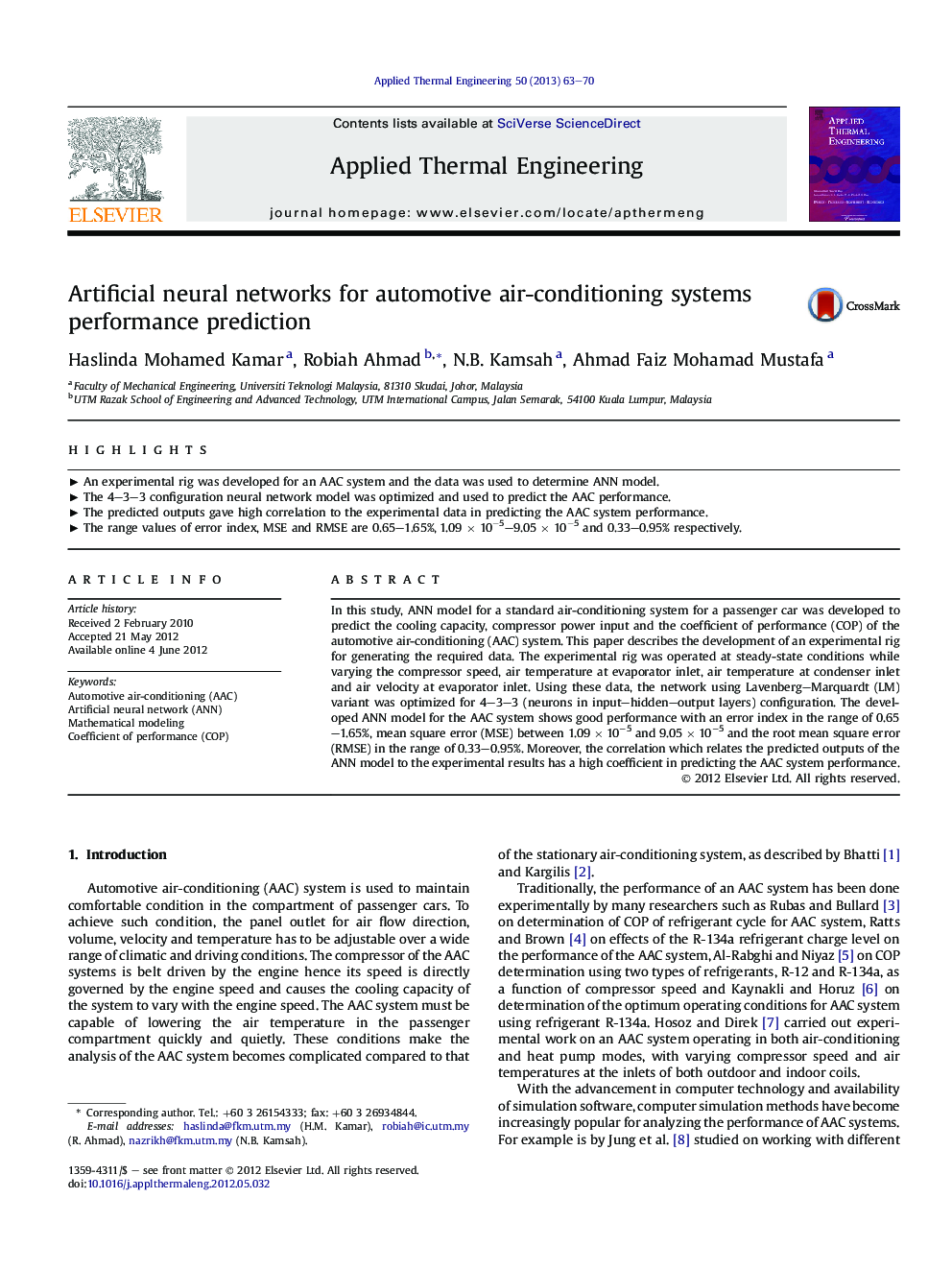| Article ID | Journal | Published Year | Pages | File Type |
|---|---|---|---|---|
| 647217 | Applied Thermal Engineering | 2013 | 8 Pages |
In this study, ANN model for a standard air-conditioning system for a passenger car was developed to predict the cooling capacity, compressor power input and the coefficient of performance (COP) of the automotive air-conditioning (AAC) system. This paper describes the development of an experimental rig for generating the required data. The experimental rig was operated at steady-state conditions while varying the compressor speed, air temperature at evaporator inlet, air temperature at condenser inlet and air velocity at evaporator inlet. Using these data, the network using Lavenberg–Marquardt (LM) variant was optimized for 4–3–3 (neurons in input–hidden–output layers) configuration. The developed ANN model for the AAC system shows good performance with an error index in the range of 0.65–1.65%, mean square error (MSE) between 1.09 × 10−5 and 9.05 × 10−5 and the root mean square error (RMSE) in the range of 0.33–0.95%. Moreover, the correlation which relates the predicted outputs of the ANN model to the experimental results has a high coefficient in predicting the AAC system performance.
► An experimental rig was developed for an AAC system and the data was used to determine ANN model. ► The 4–3–3 configuration neural network model was optimized and used to predict the AAC performance. ► The predicted outputs gave high correlation to the experimental data in predicting the AAC system performance. ► The range values of error index, MSE and RMSE are 0.65–1.65%, 1.09 × 10−5–9.05 × 10−5 and 0.33–0.95% respectively.
